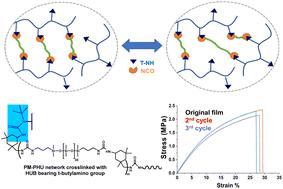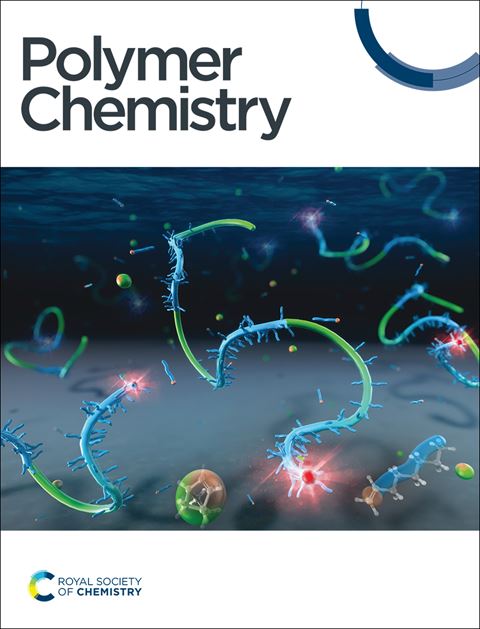Dynamic poly(hindered urea) hybrid network materials crosslinked with reactive methacrylate polymer†
Abstract
Covalent adaptive networks (CANs) crosslinked with dynamic covalent bonds, particularly hindered urea bonds (HUBs), have gained significant attention in the development of advanced materials exhibiting self-healability and reprocessability for various applications. Multifunctional crosslinkers bearing bulky t-butylamino groups, as small molecules or macromolecules, have been incorporated into the fabrication of dynamic HUB-based CAN materials. Herein, we report a well-defined polymethacrylate homopolymer (PM) bearing t-butylamino pendants as a multifunctional bulky amine crosslinker synthesized by a controlled radical polymerization. The polyaddition of the synthesized PM with polyisocyanate and polyamine allows for the fabrication of dynamic poly(hindered urea) (PHU) networks crosslinked through the formation of reversible HUBs. Their structure–property relationship and self-healing mechanism are explored with varying amounts of PM crosslinker. The fabricated PM-PHU hybrid networks designed with excess t-butylamino pendants (e.g., more PM) exhibit rapid void-filling and network relaxation with lower activation energy, even though they possess higher mechanical strength, thus leading to excellent reprocessability with high recovery of tensile/mechanical properties upon many recycles. Our work demonstrates that the design of multifunctional polymeric crosslinkers bearing t-butylamino pendants is a promising strategy for the development of advanced HUB-based hybrid network materials with improved reprocessability.


 求助内容:
求助内容: 应助结果提醒方式:
应助结果提醒方式:


